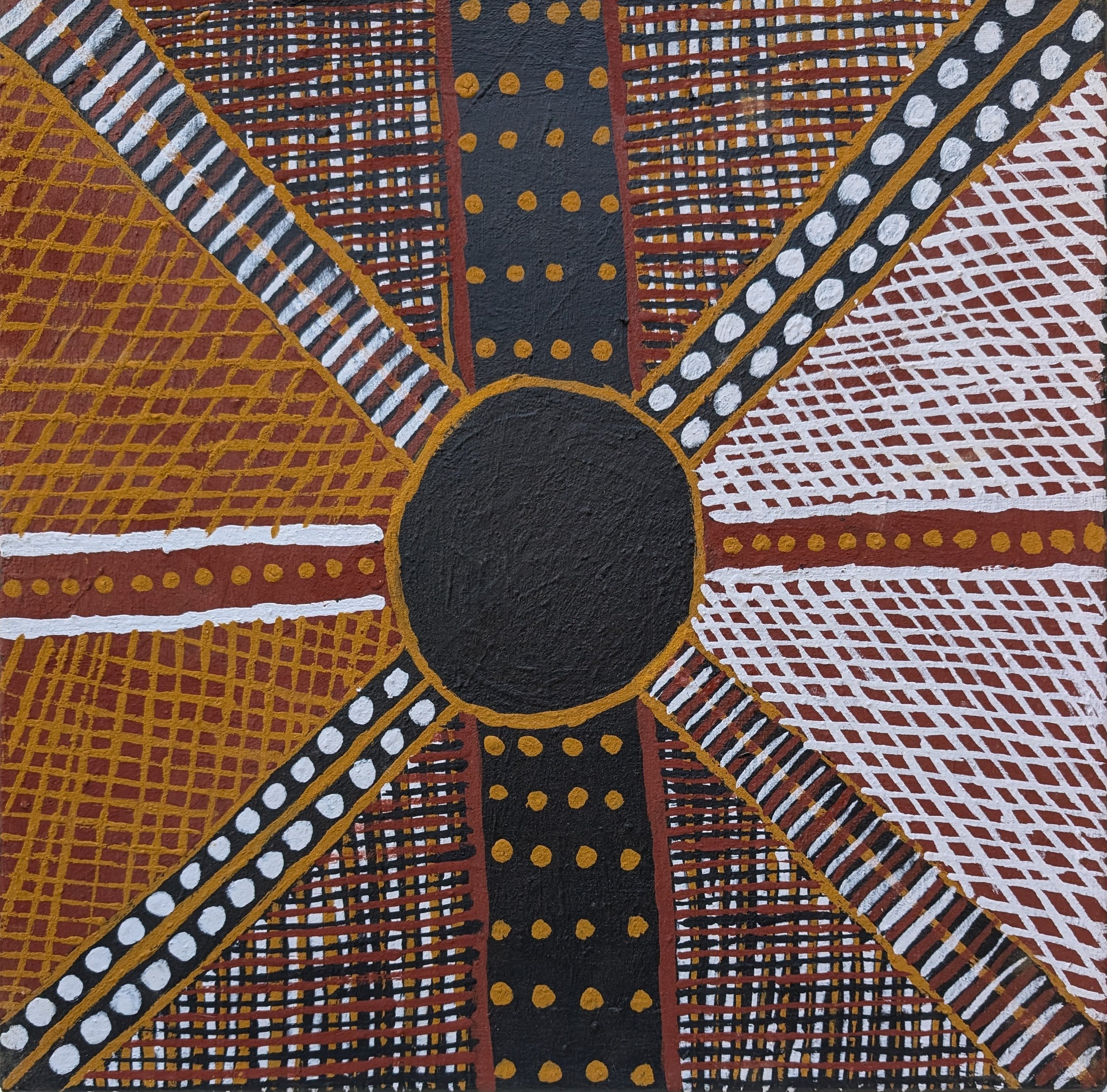
Artist: Artist Once Known | Title: Tiwi Ceremonial Tree Pole | Year: 1964 | Medium: natural earth pigments on ironwood | Dimensions: height: 58 cm
EXHIBITED
Metamorphosis-Contemporary Indigenous Sculptures and Objects, October 2009, Coo-ee Art Gallery, Sydney
ARTWORK STORY
Ceremonies play an important role in Tiwi culture. Traditionally each ceremony had its own form, which could vary depending upon the circumstances, and these were transmitted orally. Current ceremonies reflect these traditions, while taking account of modern day circumstances. There are two main ceremonial events performed:
* the Kulama (yam) ceremony, and
* the mortuary or Pukumani ceremony (sometimes spelt Pukamani).
The Kulama ceremony occurs towards the end of the wet season. It is a celebration of life and involves three days and nights of ritual body paintings, singing and dancing complete with the eating of yams according to a ritual custom. Concentric circles often appear as the main element of contemporary Tiwi patterns, representing the Kulama circle or ceremonial dancing ground.
EXHIBITED
Metamorphosis-Contemporary Indigenous Sculptures and Objects, October 2009, Coo-ee Art Gallery, Sydney
ARTWORK STORY
Ceremonies play an important role in Tiwi culture. Traditionally each ceremony had its own form, which could vary depending upon the circumstances, and these were transmitted orally. Current ceremonies reflect these traditions, while taking account of modern day circumstances. There are two main ceremonial events performed:
* the Kulama (yam) ceremony, and
* the mortuary or Pukumani ceremony (sometimes spelt Pukamani).
The Kulama ceremony occurs towards the end of the wet season. It is a celebration of life and involves three days and nights of ritual body paintings, singing and dancing complete with the eating of yams according to a ritual custom. Concentric circles often appear as the main element of contemporary Tiwi patterns, representing the Kulama circle or ceremonial dancing ground.






